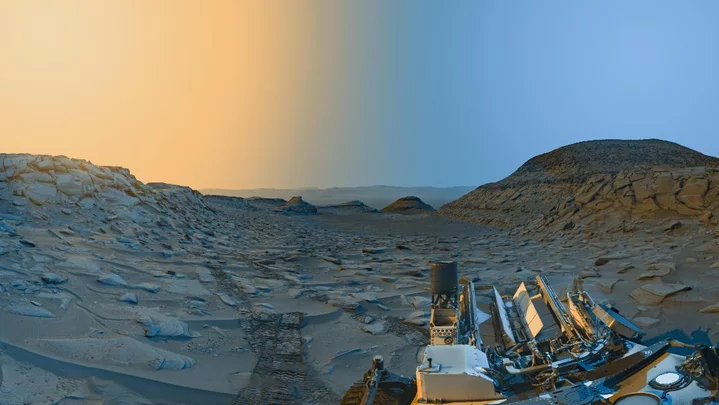Feeling lucky today? If you’re up for a spot of geology, I hope to convince you that you really are, you and the eight billion Homo sapiens, along with countless members of the other ten million or so other species, who make a living here. It could have been so different: Earth could have ended up like Mars, the nearby rocky planet not-too-dissimilar from our own that, at this point, appears to be lifeless. Why the disparity? Our good fortune results from plate tectonics, the mechanism that causes continents to move slowly-but-surely over Earth’s surface.
Earth has a hot core, hot enough to sustain a great ball of liquid iron in its interior. True, our planet is slowly getting colder, but Earth is large enough to have retained most of its original heat. Mars, with only one seventh the volume of Earth, lost most of its internal heat billions of years ago. Our internal heat is responsible for maintaining the plasticity of the mantle, the thick layer of material on which Earth’s crust literally floats. One result of continental drift is that the crust is constantly being recycled. For instance, the Pacific “plate” is being subducted under the North America (on which we in Humboldt sit, at the western edge) at a speed of a few inches per year. This recycling is responsible for the greenhouse effect, the sunlight-trapping process by which carbon dioxide in the atmosphere results in our warm climate.
Simplified greenhouse effect: visible light from the sun heats earth’s surface, which then radiates in infrared wavelengths. Carbon dioxide and water vapor allow incoming sunlight to pass through, but trap the infrared. (From Barry Evans’ The Wrong-Way Comet.)
Most planetologists believe that Mars also had a thick carbon dioxide “blanket” along with an ocean, but hat was three to four billion years ago. What happened? Mars’ problem is that carbon dioxide doesn’t just sit in the atmosphere, but is weathered out into carbonate rocks like limestone. To maintain an ongoing greenhouse effect, you need some way to return the gas from the rocks to the atmosphere. On Earth, the most significant process is our carbonate-silicate cycle, in which carbonate rocks are buried (subducted) deep below ground, where high temperatures and pressures melt them, releasing carbon dioxide.
Carbon dioxide outgassing through various processes, mainly volcanoes. (Benjilrm, Creative Commons License, via Wikimedia)
Eventually the thousand-plus active volcanoes here on Earth erupt the gas back into the atmosphere, and the cycle starts over. However on Mars, after a billion years or so of carbon dioxide recycling, the mechanism shut down because the planet’s interior had lost so much of its initial heat and it became too cold for volcanoes to function. With carbon dioxide trapped in the rocks instead of being returned to the atmosphere, the Martian air thinned. Without that carbon dioxide blanket to maintain its greenhouse effect, Mars slowly but surely froze. (True, it’s farther from the sun than we are, but those oceans lasted for a million or so years, even as the sun was maybe a third cooler than it is now.)
Mars seen through Curiosity’s mast camera: beautiful but probably lifeless. Blame the absence of plate tectonics. (JPL/NASA)
Here on Earth, the carbonate-silicate cycle keeps going thanks the interior heat that’s continually renewed through radioactive decay deep within the core. That heat drives our plate tectonic mechanism, causing the entire seabed to be recycled, fueling volcanic eruptions where plates slither past each other, returning CO2 to the atmosphere, maintaining Earth’s greenhouse effect. Hence we have liquid water in our oceans, and ubiquitous life…including curious, and lucky, humans who amuse themselves trying to figure out how it all works.



CLICK TO MANAGE